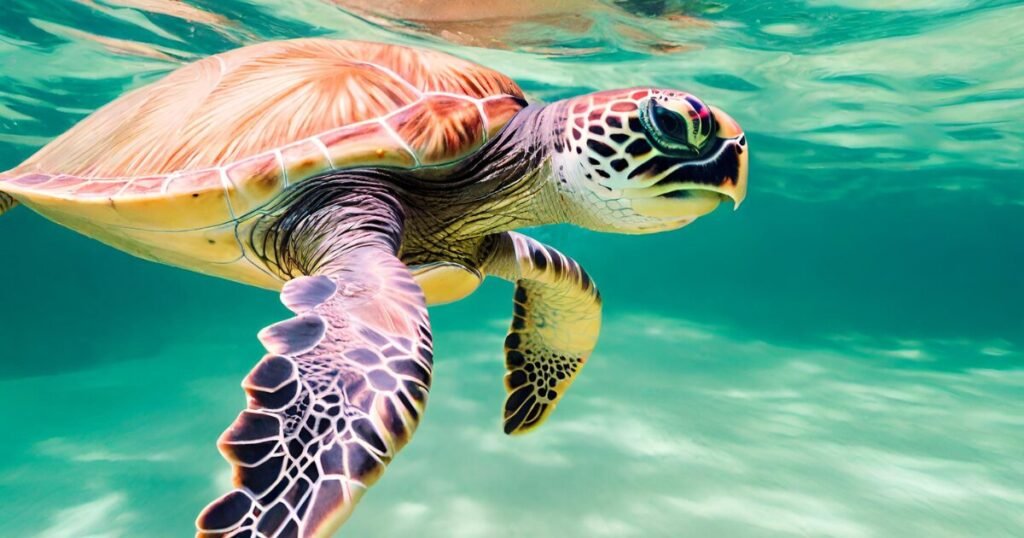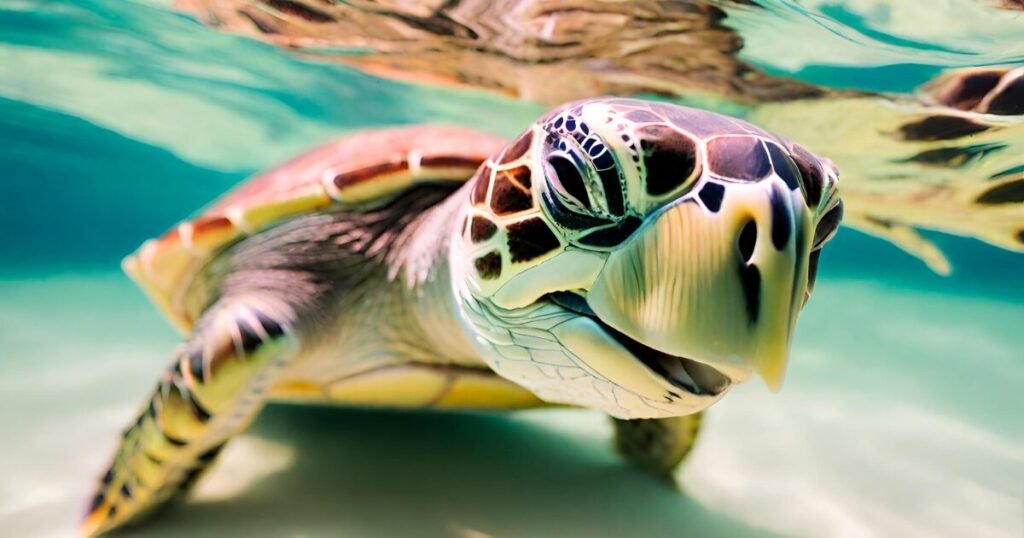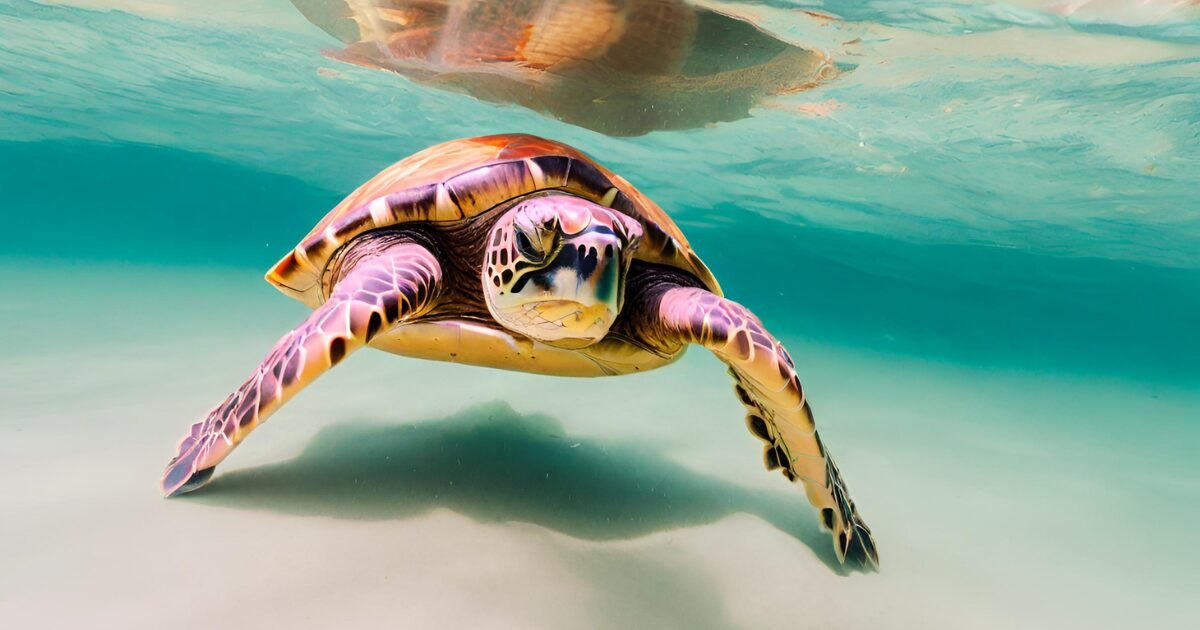Sea turtles, despite their aquatic lifestyle, are air-breathing reptiles. They do not have gills and so lack the ability to extract oxygen directly from the water. But how do sea turtles breathe air underwater?
Well, sea turtles cannot breathe underwater. However, they have remarkable breath-holders and are capable of staying underwater for several hours. They can do this because of their
- Slowed heart rates,
- Stored oxygen in blood muscles and
- Brumation.
It is a surprisingly useful talent for turtles. It allows them to swim in the sea for hours without coming out to breathe. Wish I could do this, too!
Why Can’t Sea Turtles Breathe Underwater?
Sea turtles are known as aquatic reptiles. However, they still need to breathe air. Their lack of gills does not let them extract oxygen from water. This is why they need to surface regularly to take breaths of air.
The reason for this lies in their anatomy. Their lungs are different from humans’, but they work almost the same way. It can only extract oxygen when it receives air, not water.
How Do Sea Turtles Hold Their Breath So Long?

How long can you hold your breath? Turtles can do it for several hours. How? Let’s find out how they do it.
1. Super-Sized Lungs
Sea turtles have relatively larger lungs than their body size. Naturally, it holds more air because of its large size. This increased capacity allows them to store more air with each breath. It provides a larger oxygen reservoir for underwater excursions.
2. Metabolic Slowdown
Turtles can significantly reduce their metabolic rate, especially when they are inactive or resting. During this time, their bodies use less oxygen to extend the time they can stay submerged without needing to resurface.
3. Heart Rate Deceleration
Sea turtles have evolved and adapted to their surroundings significantly. One such fascinating adaptation is their ability to slow their heart rate. During dives, their heart rate can plummet to incredibly low levels. Sometimes, it may beat only once every nine minutes!
4. Stored Oxygen
Another important evolution of sea turtles is their ability to store oxygen in blood and muscles! We humans cannot do it. This additional reserve further extends their underwater endurance. It acts as a backup supply when oxygen demand exceeds intake. They can decide when to use oxygen from which part of the body.
5. Brumation and Cloacal Respiration
Turtles usually brumate in winter. During this time, they utilized a unique technique called “Cloacal respiration.” They absorb oxygen through their cloaca during this time. What is a cloaca? Well, it is essentially their butt! They use it to absorb oxygen from the surrounding water.
FAQ

Sea turtles are full of surprises. Check the interesting questions below, and you will love it.
Do Sea Turtles Sleep Underwater?
Yes, sea turtles can indeed sleep underwater! They enter a state of reduced activity where they remain motionless for extended periods, sometimes for several hours. This isn’t exactly the same deep sleep humans experience. However, it serves a similar purpose of rest and rejuvenation.
How Long Can Sea Turtles Go Without Air?
Sea turtles are underwater breath-holding champions! During active periods, they can stay submerged for up to 45 minutes to an hour. Nonetheless, their impressive abilities extend much further. When resting, they can hold their breath for several hours!
What Is A Sea Turtle’s Lifespan?
Sea turtles are remarkably long-lived creatures. They have estimated life spans ranging from 50 to 100 years. However, pinpointing an exact maximum age is difficult. Their slow growth and delayed maturity contribute to their longevity.
Do Sea Turtles Drink Seawater?
Sea turtles do indeed drink seawater! Their diet provides some water, but they also actively ingest seawater. However, their bodies are specially adapted to handle the high salt content. They possess special salt glands located near their eyes that excrete excess salt.
Can Turtles Hear Sound Underwater?
Yes, turtles can hear sounds underwater! They have a higher sensitivity to underwater sounds compared to air. It aids them in navigation, predator detection, and even communication in some species. Their best hearing range is between 200 and 700 Hz.
Can Sea Turtles Fly?
No, sea turtles cannot fly. Their flippers are adapted for swimming, not soaring. While they gracefully glide underwater, they lack the bone structure and light weight needed for true flight.
Conclusion
So, you got your answer. Sea turtles breathe air, and not only that, they need to breathe air. They cannot breathe water or underwater. Thanks to their adaptability and evolution, they have helped them to sustain themselves in the aquatic environment.
